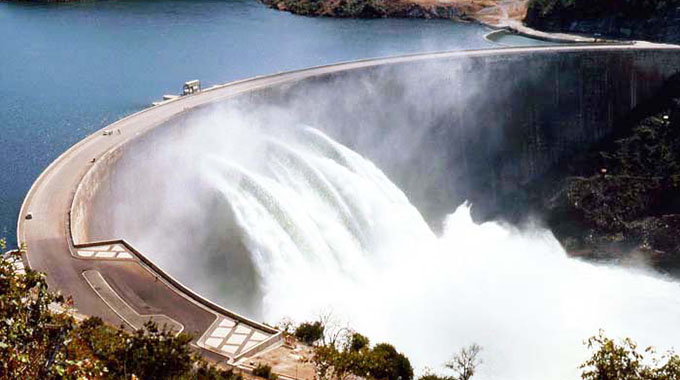National dam levels rise to 49pc

Elita Chikwati
National dam levels have risen by a marginal 0,88 percent to 49 percent as the Zimbabwe National Water Authority (Zinwa) embarks on borehole rehabilitation in rural areas, bringing relief to communities in the areas that were water stressed.
The dam levels are on a steady rise as a result of heavy rains which most parts of the country have been receiving since last week.
The rains are, however, not equally distributed, with some places only receiving light showers.
Zinwa corporate communications manager Mrs Majorie Munyonga yesterday said the national dam level average remained lower than the 64,2 percent expected during this period of the year.
Gwayi Catchment had a dam level average of 43,5 percent, Manyame Catchment 74,1 percent and Mazowe Catchment 76,5 percent.
“Mzingwane has 45,6 percent, Runde 39,9 percent, Sanyati 48,9 percent and Save 53,7 percent.
“Zinwa has also noted an improvement in the flows in the Zambezi, Limpopo, Save, Odzi, Runde, Devure, Pungwe, Musengezi and Mazowe rivers. These improvements in the river flows and dam levels bring relief to a significant number of areas that have been water stressed in recent weeks,” she said.
Mrs Munyonga pleaded with the nation to use water efficiently and sparingly despite the recorded improvements in the dam levels.
“Water users across the board are, therefore, encouraged to practice water conservation, which will help stretch the limited available water resources longer and also assist users in keeping their bills down,” she said.
Mrs Munyonga said Zinwa was also in the process of rehabilitating boreholes in different districts to improve access to water by rural communities.
“Zinwa has successfully rehabilitated 109 boreholes in water-stressed districts of Buhera, Chipinge, Rushinga, Mwenezi, Chivi and Nyanga.
“The target is to repair and bring back to functionality 933 boreholes in the provinces of Mashonaland East, Manicaland, Masvingo, Matabeleland North, Matabeleland South and the Midlands,” she said.
Meanwhile, crops and pastures in most parts of the country have also continued to show signs of improvement.
The recent rains have brought relief as some crops that had started wilting are now recovering.
Farmers have also taken advantage of the rains to apply top dressing fertiliser while others are planting sugar beans and sweet potatoes.
Zimbabwe Farmers Union president Mr Abdul Nyathi said the situation could further improve if the current rains continue.
The Meteorological Services Department, however, said from yesterday, they expected less rainfall activity.
Mr Nyathi said the situation had become dire in the southern provinces.
“We urge farmers to plant short season varieties and small grains.
“Pastures are now beginning to grow and will be revived if the current rains continue into February. The grass should grow to tasselling stage. If it remains at the vegetative stage, it will not last to the next season.
“We urge farmers to continue with water harvesting techniques so they harness the available water,” he said.










Comments